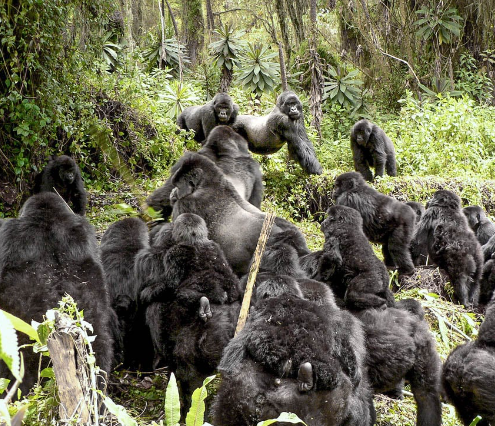How Do Gorillas Establish Social Hierarchies?
Understanding how gorillas establish social hierarchies sheds light on their complex social structures and behaviors. These hierarchies not only help in maintaining order within gorilla groups but also influence their survival and reproduction. By exploring this fascinating topic, we can gain insights into the social dynamics of these remarkable primates.
The Role of the Silverback
At the heart of gorilla social structure is the silverback male, a mature adult that plays a crucial role in maintaining the group’s cohesion. The silverback leads the troop, making decisions about food sources, territory, and group movement. His dominant status is established through displays of strength and confidence, often involving loud vocalizations and impressive physical displays. This leadership is essential, as it not only ensures safety from potential threats but also maintains social stability within the group.
Interactions and Relationships
Gorillas establish their social hierarchies through various interactions and relationships within the group. Subordinate males, known as blackbacks, often exhibit behaviors that demonstrate their respect for the silverback, such as grooming and following his lead. Female gorillas also play a significant role in this hierarchy, as their reproductive choices can influence male dynamics. Strong bonds are formed through grooming, play, and mother-infant interactions, which can further solidify relationships and social status among members. These social interactions are key to group harmony and help reduce conflicts among members.
Challenges to the Hierarchy
While the silverback maintains authority, the hierarchy is not static; it can change due to various factors. Challenging a silverback often involves confrontations or rivalries with other males, typically younger blackbacks. If a challenger successfully defeats the silverback, he may claim the dominant position, which can lead to significant changes in group dynamics. Additionally, social hierarchies can be influenced by external factors such as habitat changes, food scarcity, and human encroachment. These challenges highlight the dynamic nature of gorilla social structures, demonstrating that survival often hinges on adaptability and social intelligence.
In conclusion, the establishment of social hierarchies among gorillas is a fascinating blend of leadership, relationships, and adaptability. By understanding these dynamics, we can appreciate the complexities of their social interactions and the vital roles each member plays within their troop. To learn more about the intriguing world of gorillas and their social behaviors, consider exploring wildlife documentaries, books, or conservation programs focused on these incredible creatures. If you’re interested in gorillas’ artistic expressions, you can explore some of gorilla paintings, gorilla sculptures, and other works of art.

